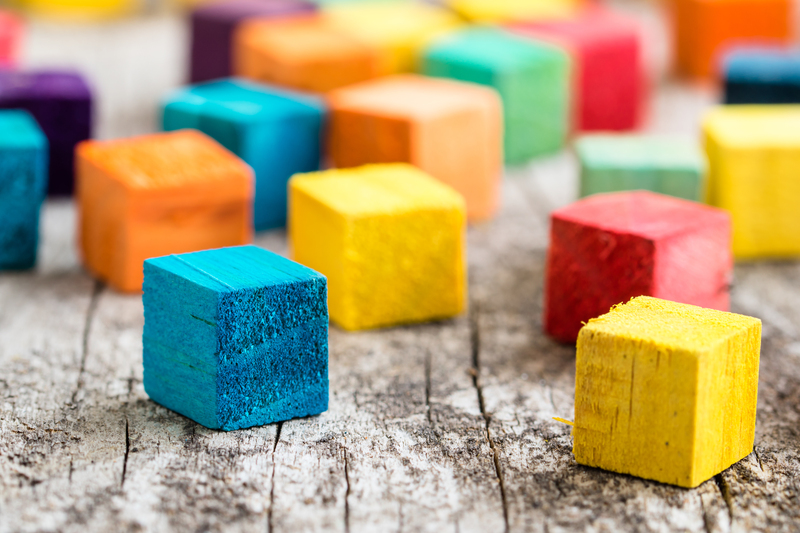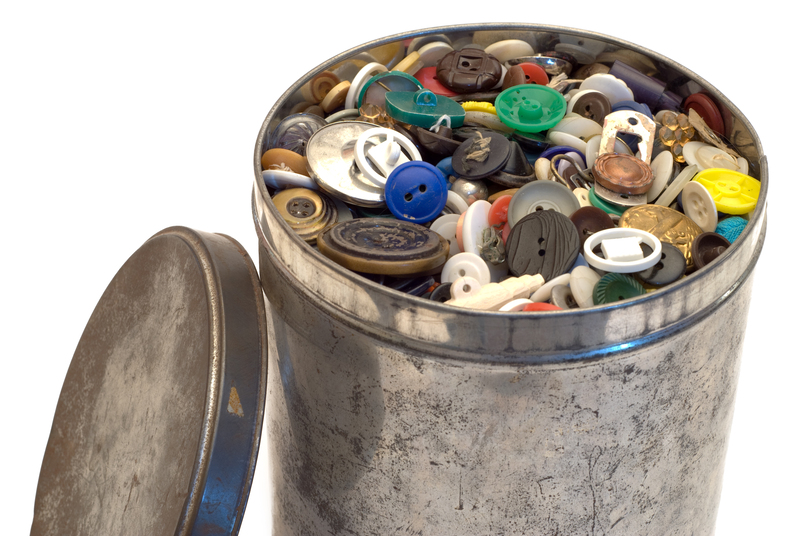Recycling Pots and Pans: What You Need to Know
In today's eco-conscious world, finding sustainable methods for disposing of household items is essential. Pots and pans are staple kitchen tools, but what happens when they become worn out or unusable? This comprehensive guide covers everything you need to know about recycling pots and pans, from the environmental impact of old cookware to the most effective ways to give them a second life.
Why Is It Important to Recycle Kitchenware?
Most people focus on recycling plastics, glass, or paper, but rarely consider discarded cookware. Recycling your pots and pans not only helps reduce landfill waste but also conserves natural resources through metal recovery and re-use.
- Environmental Impact: Old cookware can take decades or even centuries to decompose in landfills, leaching harmful chemicals into soil and groundwater.
- Resource Conservation: Recycling metals from pans conserves energy and reduces the need for mining new materials.
- Economic Benefits: Recycled metal is cheaper and less energy-intensive to process than raw materials.
- Legal Compliance: Some cities require eco-friendly disposal of metals, including pots and pans.

Are Pots and Pans Recyclable?
Yes, most pots and pans are recyclable, but the recycling process depends on the material and your local recycling facilities. *Kitchenware* is commonly made from metals such as aluminum, stainless steel, or copper--all of which are in high demand for recycling. However, there are some important considerations you need to know:
- Non-stick coatings (like Teflon) complicate recycling; pots and pans with such coatings may not always be accepted in curbside recycling.
- Handles made from plastic, silicone, or wood typically need to be removed.
- Glass lids and ceramic coatings require different recycling methods.
- Rusty or damaged pans can generally still be recycled as scrap metal, but check with your facility first.
Common Materials in Cookware
- Stainless Steel: Highly recyclable and widely accepted at scrap yards.
- Aluminum: Lightweight and valuable; accepted by most metal recyclers.
- Copper: Rare in pans but highly sought after by metal buyers.
- Cast Iron: Extremely durable and always accepted at metal yards, though heavy.
- Non-Stick: Requires removal of coating before recycling.
How to Prepare Pots and Pans for Recycling
Before tossing your old cookware in the bin, follow these *important* steps to ensure they are ready for recycling:
- Remove all non-metal parts: Detach handles, knobs, and any other non-metal additions. This helps recyclers process the metal more efficiently.
- Clean your cookware: Wash off any grease or food residue. This is not always compulsory, but it's courteous and can improve the value of scrap.
- Check for recycling guidelines: Not all recycling centers accept all types of cookware. Contact your local waste management facility for specific instructions.
Where Can You Recycle Old Pots and Pans?
Many recycling options are available for disposing of worn-out cookware responsibly. Here are the most common ways to recycle your pots and pans:
1. Curbside Recycling Programs
- Some municipalities accept metal cookware in curbside recycling bins--but always check local rules first.
- Non-metal parts must be removed beforehand.
- Non-stick pans and ceramic cookware might not be accepted curbside.
2. Scrap Metal Recycling Centers
- Scrap yards accept almost all types of metal pots and pans, regardless of age or condition.
- They usually pay by weight; separating different metals (aluminum, steel, copper) can maximize value.
- Remove non-metallic attachments to ensure smooth processing.
3. Donation and Reuse Centers
- If your cookware is still functional, consider donating it to charities, second-hand stores, or shelters.
- Reuse is always better than recycling: someone else may need kitchen equipment!
- Even slightly damaged pots can sometimes be repurposed by schools, theaters, or artists.
4. Manufacturer Take-Back Programs
- Some brands (like Calphalon and TerraCycle) run take-back or recycling programs specifically for cookware.
- Contact the manufacturer or visit their website for details.
- You may receive discounts or incentives for participation.
5. Local Community Drives
- Keep an eye out for city-wide recycling events or metal collection drives.
- Local recycling days are perfect for getting rid of bulk kitchen waste responsibly.
What to Do with Non-Recyclable Cookware
In some cases, pans and pots cannot be recycled due to coatings or materials. But don't rush to throw them in the trash! Consider these sustainable alternatives:
- Upcycling: Use old pans as planters, craft projects, birdbaths, or garden decor.
- Repurpose for Storage: Turn large pots into tool holders or organizers in the garage.
- Art Projects: Artists and crafters often seek out unique metallic items for sculpture and installations.
- Offer for Free: List cookware on community exchange sites like Freecycle or Buy Nothing groups.
Tips for Responsible Pots and Pans Recycling
- Don't mix metals: Separate aluminum, steel, and copper where possible for easier recycling.
- Remove hazardous parts: Certain non-stick coatings (older than 2013) may contain PFOA or PTFE, which are hazardous.
- Check for recycling rules or safe disposal sites for these chemicals.
- Check for local regulations: Some areas have restrictions or requirements for metal recycling.
- Schedule pickups for heavy items: Many scrap yards offer pickups for bulk or especially heavy cookware, such as cast iron pots or large stockpots.
- Combine with other metals: Bundle old cookware with other scrap metal for a bigger recycling payout.
Frequently Asked Questions About Recycling Cookware
Can I recycle pots and pans with plastic handles?
*Yes, but you must remove plastic, silicone, or wooden handles before recycling the metal pan. Most facilities will only accept the metal parts for processing.*
Are non-stick pans recyclable?
*It depends. Many non-stick pans are not accepted at standard recycling centers due to their coatings. Check with your local scrap yard to see if they process non-stick cookware, or seek out manufacturer take-back programs.*
Do all recycling centers accept old pots and pans?
*No, not all centers accept cookware, especially if it is coated or contains mixed materials. Always verify with your local center before making a trip.*
Can I sell my old cookware for scrap?
*Yes! Most metal pots and pans--even those rusty or beyond repair--can net a small payout at scrap recycling centers if you separate the metals.*
How to Find Cookware Recycling Programs Near You
Looking for local recycling options? Here are some steps to find a facility or program nearby:
- Use Online Recycling Locators: Websites like Earth911, RecycleNation, and your local municipal website allow you to search by ZIP code for metal recycling centers and hazardous waste drop-offs.
- Call Your Local Waste Authority: Ask about specific rules for recycling cookware and which centers accept them.
- Visit Major Retailers: Some stores, such as home improvement or specialty kitchen shops, collect cookware for recycling events or trade-in programs.
- Contact Cookware Brands: Check your pans' manufacturer websites for any take-back or recycling offers.
- Participate in Community Drives: Churches, schools, and green organizations sometimes run dedicated kitchenware collection days.

Eco-Friendly Alternatives: Reduce, Reuse, Recycle
The best way to reduce waste is by choosing durable, long-lasting cookware and taking care of it so you don't need to throw it away often. Here are some eco-friendly tips:
- Invest in Quality: High-quality stainless steel, cast iron, and enameled goods last decades if cared for properly.
- Avoid Disposable Cookware: Opt for reusable pans over "single-use" bakeware or plastic utensils.
- Maintain Your Pots and Pans: Regular cleaning and seasoning (cast iron) can extend their lifespan.
- Choose Recyclable Materials: When shopping for new cookware, look for pans made from fully metal and recyclable materials.
- Support Sustainable Brands: Many cookware companies now offer recycling programs, eco-friendly manufacturing, and even buy-back deals.
Conclusion: Making Recycling Pots and Pans a Habit
Recycling your old pots and pans is a vital step toward a greener kitchen and a more sustainable household. With a little planning, you can ensure unwanted cookware stays out of the landfill and finds new life through recycling or upcycling. Sustainable kitchenware recycling not only benefits the environment but also conserves resources and supports a circular economy. Before tossing that old frying pan, check your local recycling guidelines, consider donation or repurposing, and do your part to keep our planet clean.
Remember: Every pot and pan counts on the path to sustainability!
Get Started with Pan and Pot Recycling Today!
- Check your local recycling policies.
- Prepare your cookware by removing non-metal parts.
- Consider reuse and donation as your first step.
- If recycling, sort metals correctly for the best results.
Feel free to share your recycling success stories or tips in the comments below!